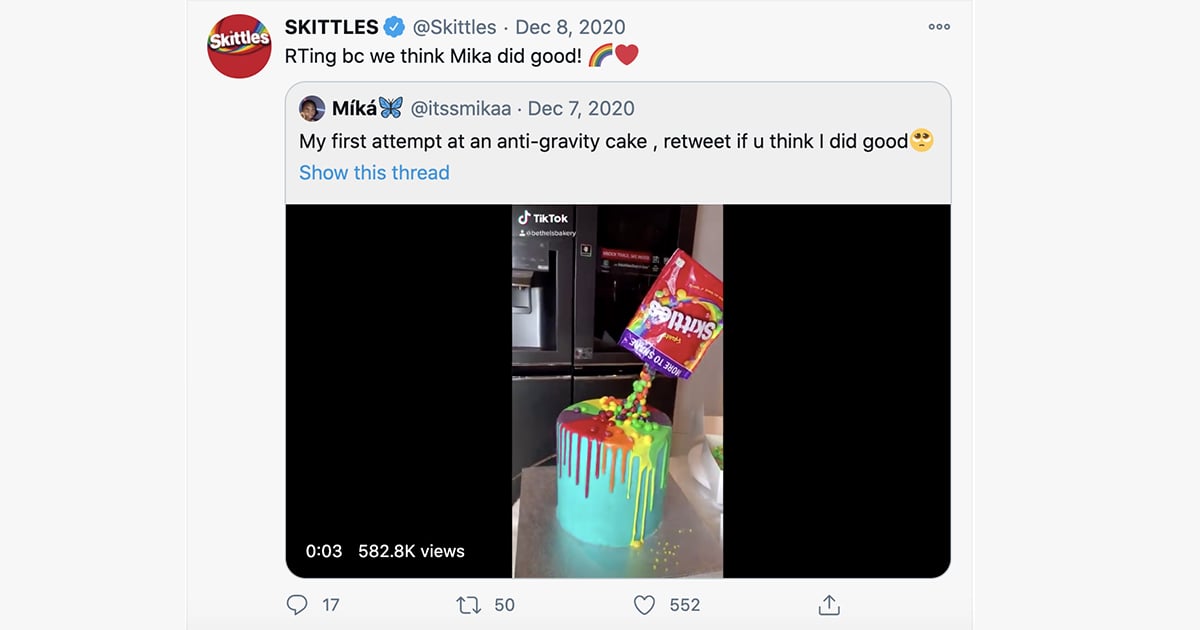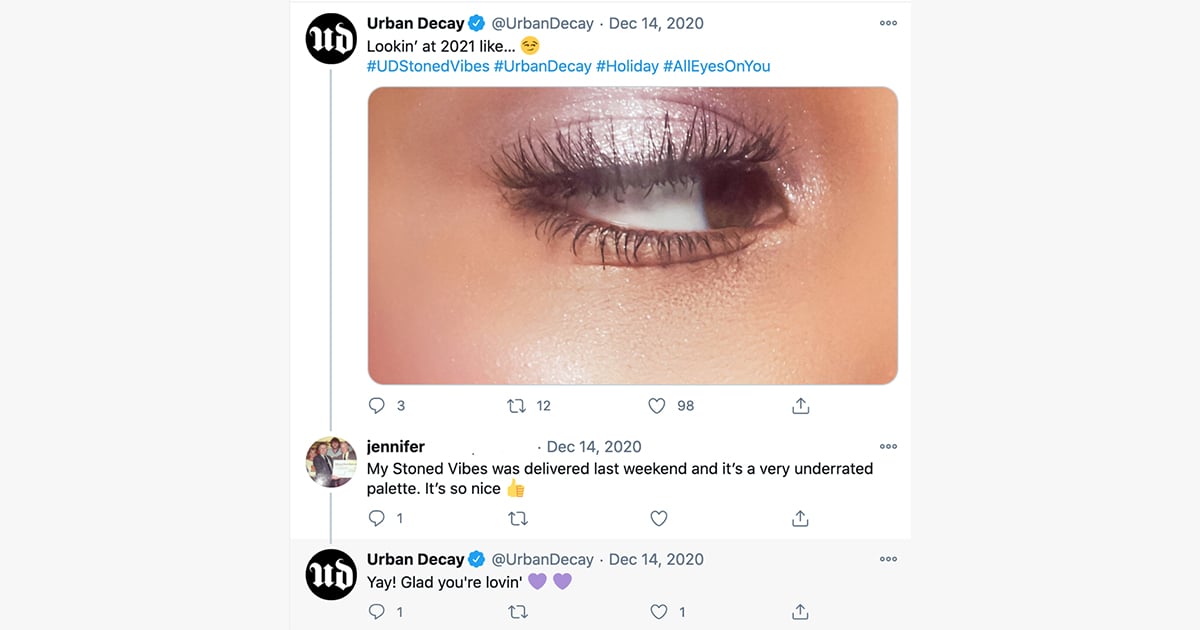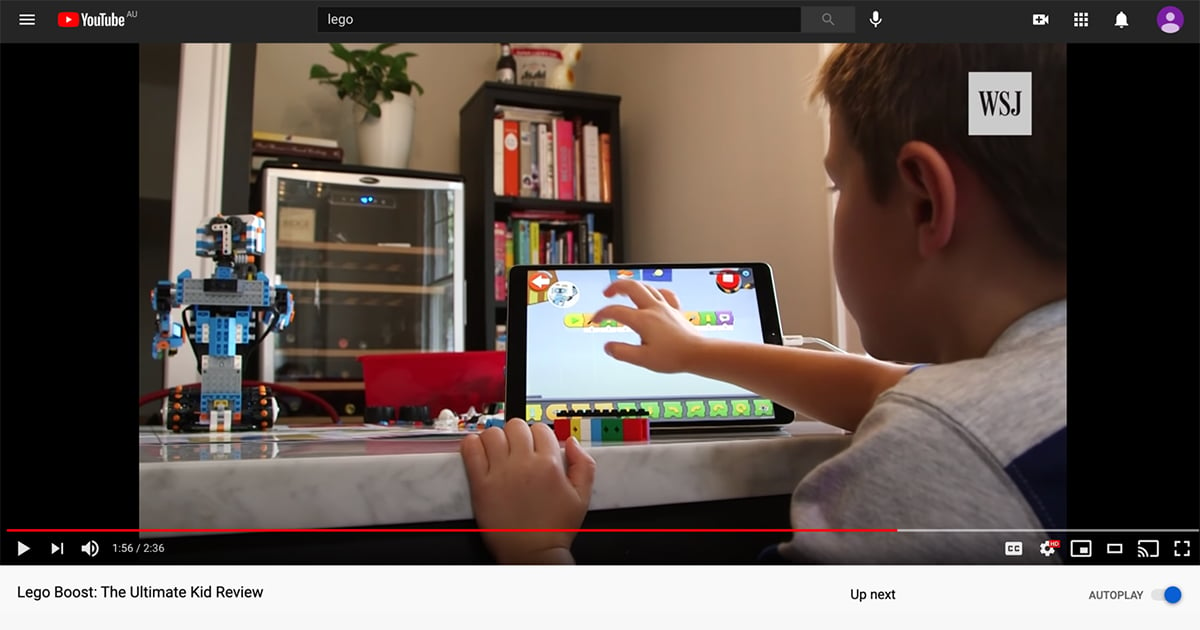User-generated content (UGC) is content created organically by a brand’s audience that is then posted on social media platforms, blog posts, online reviews, and podcasts.
Viewed as both an authentic and cost-effective way for businesses to advertise and grow, UGC can increase engagement and build trust in a way that more traditional digital marketing strategies can fall short.
According to a study by Comscore, UGC on social media posts create 28% higher engagement than standard company posts.
Benefits of user-generated content

Building trust with your customers is no longer an option—it’s a necessity. It is key to driving conversions and increasing sales.
Sharing user-generated content has many benefits if you plan ahead, think about your overarching marketing goals (as well as your target audience), and incorporate it into your eCommerce marketing strategy effectively.
UGC is authentic
If Cobs Popcorn told you that their snacks were delicious, amazing, and definitely worth buying, how likely is it that you’d believe them? That’s what they have to say.
The truth is, customers these days know that brands will always describe a product in the most positive light because they’re trying to make a sale.
That has lead to a widespread mistrust of traditional advertising where companies toot their own horns in the hope that consumers will hand over their hard-earned money without an ounce of cynicism.
UGC is particularly effective because a customer has enjoyed a product so much that they’ve voluntarily tooted a brand’s horn—sharing their love online for all to see.
It’s word-of-mouth on a global scale.
In fact, millennials surveyed in a recent study said that user-generated content is 35% more memorable and 50% more trusted than other media.
It’s worth noting that influencer marketing does not fall within the realm of UGC marketing, as it is very much paid advertising (no matter how much they try to obscure that fact). Shoppers are hip to these types of ads too.
Photo source: Cobs
UGC saves time
Gone are the days when business owners have to allocate hours (upon hours) of dedicated time each week creating fresh content (and captions) for followers.
When customers are creating content for you to share, you can focus your attention on other key elements of building your eCommerce empire.
Building a library of relevant, relatable content for your audience can take time and money, but with an effective UGC strategy, the content load is a whole lot lighter.
Singer Sewing started the campaign hashtag #ItStartsWithAStitch, encouraging their followers to share meaningful photos with their sewing machines.
This kind of user-generated post not only gives people the warm and fuzzies but portrays Singer as a brand that cares about its people and pays attention to their stories. It goes beyond sales.

Photo source: Singer Sewing Company
Boost your social proof
Ever heard of social proof?
Social proof is the phenomenon where people are more likely to value and trust something when we see others doing it.
Business owners can increase their social proof to drive sales and build trust by taking advantage of user-generated content.
When potential customers can see that other people are loving your brand, they’re more likely to hand over a slice of their trust too.
A global study recently found that 92% of consumers trust recommendations from others, even when it’s from people they don’t know.
It’s no surprise when you think about how much more human and relatable real content from real people is, compared to a banner on your website that declares, ‘We’re the best, buy from us!’.
With UGC you can reveal a light-hearted, playful side to your eCommerce business that actually starts conversations.

Photo source: Skittles
User-generated content strategy
The best way to implement any and every marketing strategy is to provide value and always keep consumers in the front of your mind.
It’s not about milking customers for all they’ve got. UGC is a two-way street—meaning that if you’re all take and no give, a negative spotlight could soon shine on your business.
Best practices for your user-generated content
UGC best practices include thoughtful replies to reviews, shares, and tweets as well as asking permission from users before reposting their content.

Photo source: Fuji
- Encourage customer reviews
Asking your customers for reviews can produce user-generated content that gives you free (super valuable) insights into what customers are loving (or what they think needs improvement).
Makeup brand Urban Decay post frequently on Twitter about new products but also takes time to reply to each and every comment—good or bad.
Not only does this type of transparency build trust, but it can make shoppers feel appreciated and heard.
Reviews and ratings on Google and Yelp can go a long way toward changing a shopper’s view of your brand (in either direction), so pushing your most adoring customers sharing content on social media to those services can also make a huge difference in how you are viewed online.

Photo source: Urban Decay
- Start a contest or giveaway
As a small or medium eCommerce store, running a contest to encourage user-generated content is a popular and effective option.
Creating a competition can motivate customers to begin sharing the love.
Australian eco-friendly underwear brand Le Buns offered customers the chance to win garments from their collection if they commented on a post, tagged a friend, and shared it to their Instagram Story.
Although it’s not necessarily a free promotion, it can be a low-cost opportunity to get your brand’s name in front of fresh shoppers.

Photo source: Le Buns
- Find your best fit platform
It’s important to choose the social media platform that suits your brand’s eCommerce strategy to maximize engagement and increase sales.
Although most stores head straight to Instagram to start building user-generated content, other platforms such as podcasts, blog posts, and YouTube can be equally as effective.
LEGO’s YouTube channel features fan interviews, new creations made by LEGO enthusiasts, and even reviews from kids who love the brand.

Photo source: LEGO
- Analyze your UGC marketing progress
As with any approach you take to grow your eCommerce store, analyzing and reporting is always useful.
If one user-generated content strategy worked really well, how can you make sure it wasn’t a one-off? What platforms work well for you and in what ways can you change and adapt to maximize brand engagement moving forward?
Looking at how your competitors produce and respond to user-generated content can be valuable research into what might work well in your niche.
How can you improve on what they’re doing to offer more value, better customer service, and a more entertaining shopper experience?
Authenticity pays
79% of people in a study by Stackla said that UGC highly impacts their purchasing decisions.
If you’re not already onboard the UGC train, your brand could be missing out. Once you let your customers toot your horn for you, you might never look back.

